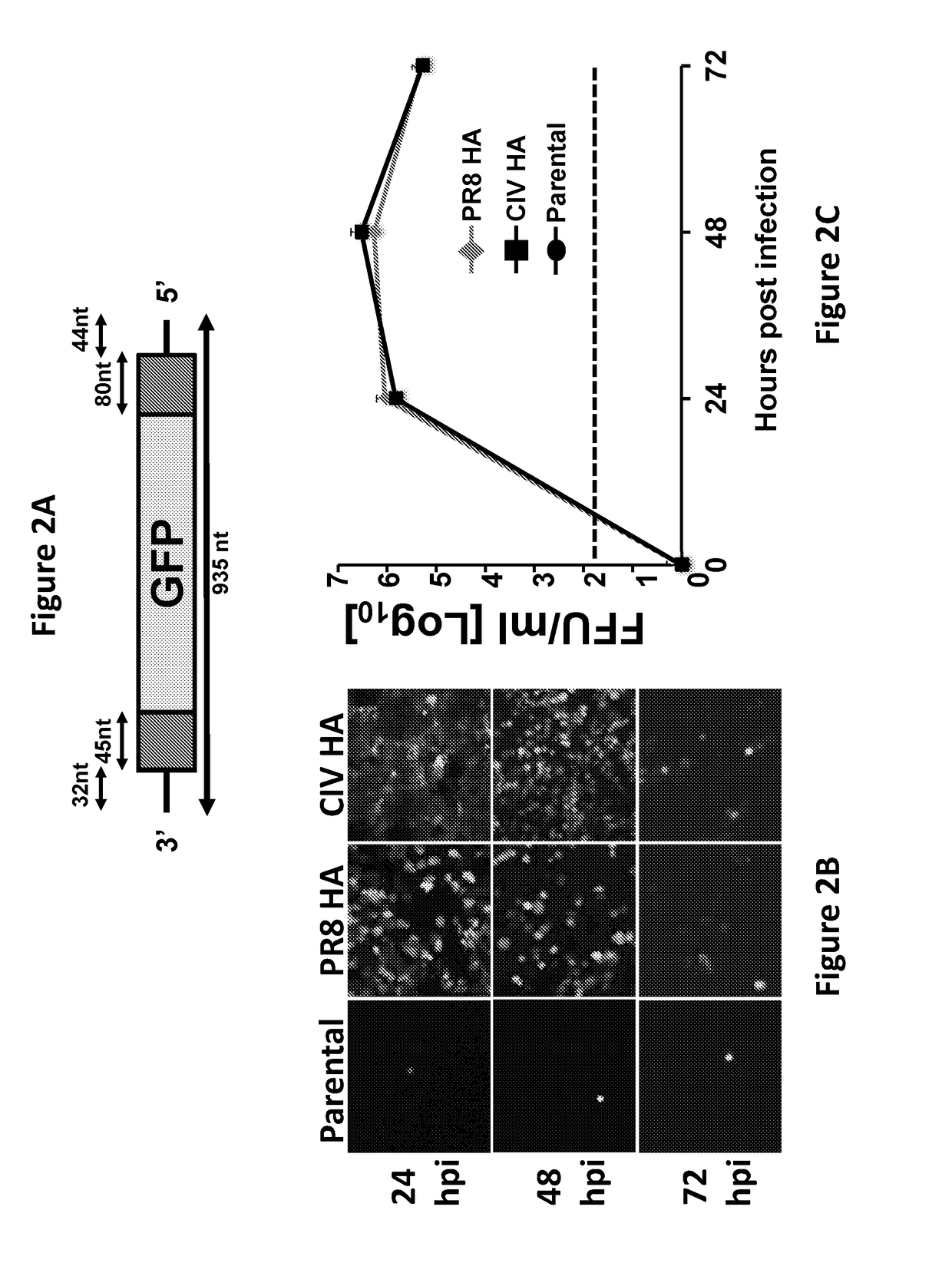Single-Cycle Virus for the Development of Canine Influenza Vaccines
a single-cycle virus and canine influenza technology, applied in the field of single-cycle virus for the development of canine influenza vaccines, can solve the problems of no laiv for civ infections, and the true risk of human infection by civ is unknown
- Summary
- Abstract
- Description
- Claims
- Application Information
AI Technical Summary
Benefits of technology
Problems solved by technology
Method used
Image
Examples
experimental examples
[0119]The invention is further described in detail by reference to the following experimental examples. These examples are provided for purposes of illustration only, and are not intended to be limiting unless otherwise specified. Thus, the invention should in no way be construed as being limited to the following examples, but rather, should be construed to encompass any and all variations which become evident as a result of the teaching provided herein.
[0120]Without further description, it is believed that one of ordinary skill in the art can, using the preceding description and the following illustrative examples, make and utilize the present invention and practice the claimed methods. The following working examples therefore, specifically point out the preferred embodiments of the present invention, and are not to be construed as limiting in any way the remainder of the disclosure.
example 1
[0121]Using plasmid-based reverse genetics techniques, a single-cycle infectious canine influenza virus (sciCIV) was developed based on the A / canine / NY / dog23 / 2009 H3N8 influenza virus. In this sciCIV approach, the fourth viral segment, which encodes for the receptor-binding and fusion protein hemagglutinin (HA), has been removed. Thus, upon infection of normal cells, although no infectious progeny are produced, the expression of other viral proteins occurs and is immunogenic. The nucleic acid sequences of the viral segments, and the amino acid sequences of the encoded viral proteins, used in the development of the sciCIV are provided in SEQ ID NOs: 1-18)
[0122]Experiments were first conducted to generate and characterize CIV (A / canine / NY / dog23 / 2009 H3N8) HA-expressing MDCK cells. HA protein was first detected by indirect immunofluorescence. Parental and HA-expressing influenza A / Puerto Rico 8 / 34 H1N1 (PR8) and A / canine / NY / dog23 / 2009 H3N8 (CIV) MDCK cells were fixed and stained with a...
PUM
| Property | Measurement | Unit |
|---|---|---|
| Immunogenicity | aaaaa | aaaaa |
Abstract
Description
Claims
Application Information
 Login to View More
Login to View More - R&D Engineer
- R&D Manager
- IP Professional
- Industry Leading Data Capabilities
- Powerful AI technology
- Patent DNA Extraction
Browse by: Latest US Patents, China's latest patents, Technical Efficacy Thesaurus, Application Domain, Technology Topic, Popular Technical Reports.
© 2024 PatSnap. All rights reserved.Legal|Privacy policy|Modern Slavery Act Transparency Statement|Sitemap|About US| Contact US: help@patsnap.com










